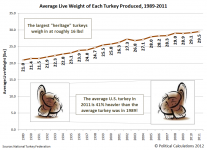Per Lefty’s comments, I too would like to see scientific data that today’s hatchery raised trout can’t produce offspring given a stream has the right conditions for reproduction.
There's been lengthy threads with lots of links, feel free to search!
Early in the hatchery programs (in the west and Midwest), hatcheries had a heck of a time raising trout in captivity. They were trying to raise genetically wild fish. They'd attack each other, run themselves into walls scooting from hatchery workers, spook easily and refuse to eat within hours after being spooked, etc. This wasn't learned behavior, it was genetic, as their offspring born in the hatchery would do the same.
Nonetheless, they did get SOME fish. And other hatcheries, using different starting strains, had some as well. Over time, they learned which strains had higher success rates. Hatcheries traded eggs and fish of their most successful and desirable fish, and in a fairly short number of years they had collectively created strains that were able to be raised in captivity with much higher success rates. In the last 100 years or so they've been perfecting those strains, for hatchery raising, to grow quickly, to breed when they want them to, to have certain colors, be tolerant of certain diets, to spook less easily, etc.
It seems, though, that nationwide, many are finding that these hatchery strains do poorly in a wild environment. They don't survive as long. They reproduce at a very poor rate. Some Midwest hatcheries, with the goal of "re-seeding" streams, have had some success by going back to wild strains raised in a hatchery, and utilizing lower density raceways, cover in the race-ways, automatic feeders, etc. They aren't looking to provide a fishery directly from stocked fish, so they don't need the huge numbers. They're looking to "seed" streams they think are capable of holding their own wild populations.
That said, Jack does have a point that you haven't totally removed the "wild" genes from the population. You've skewed the population so that fish with traits favorable to growth in the wild are in the minority, and those with traits favorable in captivity are in the majority. But all of the above always were, and still are, part of the population. It's not quite "evolution" yet, it's just selective breeding. If we wanted to, say, eliminate blonde hair from human populations, we could get rid of 90+% of them in 2 generations! But it may take hundreds to achieve 100%.
Hence, hatchery fish may, on average, do very poorly in the wild compared to genetically wild fish. But that doesn't mean that NONE succeed. And just as it only took a few generations to minimize those traits, it'd likewise take only a few generations to get them back.
Could I surmise that many of our current Class A and B wild streams with wild brown trout had original parents that were hatchery raised?
Hatchery born, yes. But the majority were seeded in the early 1900's, when hatchery strains were closer, genetically, to wild fish. And they stocked them as not even fingerlings. They were fry, transported around the state by trains, and given to individuals who put them in backpacks and the like to take where they wished.
Did any streams get "seeded" more recently? I have no verification but I'm confident the answer would be yes. If not fully seeded, at least "contributed to the gene pool" by interbreeding with wild stock. As I said, there still is SOME reproductive success, and in a few short generations a suitable strain would develop from them. It's just a little harder for them to initially catch on.





